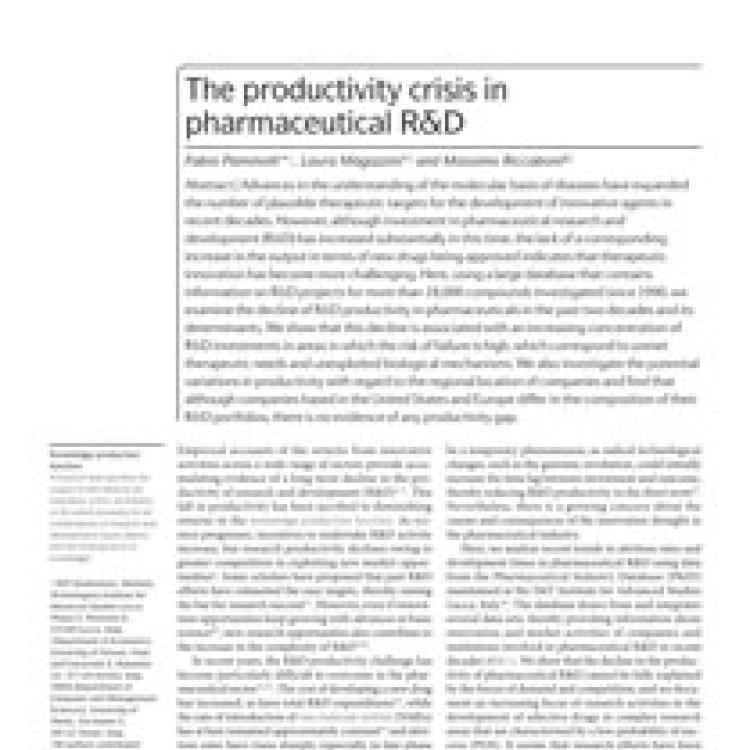The Productivity Crisis in Pharmaceutical R&D
Advances in the understanding of the molecular basis of diseases have expanded the number of plausible therapeutic targets for the development of innovative agents in recent decades. However, although investment in pharmaceutical research and development (R&D) has increased substantially in this time, the lack of a corresponding increase in the output in terms of new drugs being approved indicates that therapeutic innovation has become more challenging. What is driving firm efforts in R&D and what has contributed to the R&D productivity slowdown in recent years?To answer those questions, researchers used a large database that contains information on R&D projects for more than 28,000 compounds investigated since 1990, and examined the decline of R&D productivity in pharmaceuticals in the past two decades and its determining factors. They found that this decline is associated with an increasing concentration of R&D investments in areas in which the risk of failure is high, which correspond to unmet therapeutic needs and unexploited biological mechanisms. They also investigated the potential variations in productivity with regard to the regional location of companies and found that although companies based in the United States and Europe differ in the composition of their R&D portfolios, there is no evidence of any productivity gap.Key Points:The decline in pharmaceutical R&D productivity is accompanied by a greater focus on unmet therapeutic needs and biological mechanisms that have not been explored as therapeutic targets.Through their payment policies, public and private payers have discouraged development of “me too” drugs, and the response is research to develop new products in therapeutic areas where finding a cure may be more difficult and take longer.Although at first glance the European R&D effort appears to be more productive than the U.S., the greater and more successful biotechnology effort in the U.S. illustrates the higher risk profile of U.S. R&D. The difference in productivity between the U.S. and Europe disappears with appropriate adjustment to reflect the higher risk nature of research in the U.S.This research was funded, in part, by grants from the National Pharmaceutical Council, AstraZeneca Pharmaceuticals, Novartis Pharmaceuticals, and Pfizer.Due to copyright issues, the article must be downloaded from the Nature Reviews website.
Image
